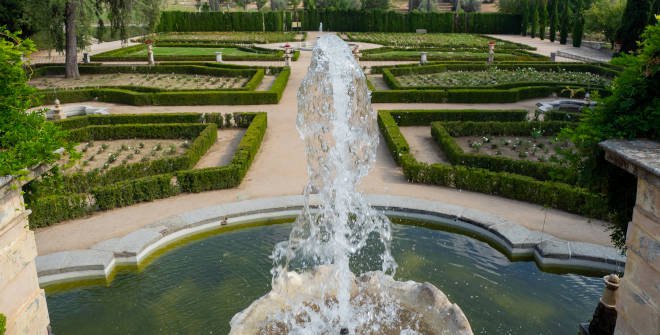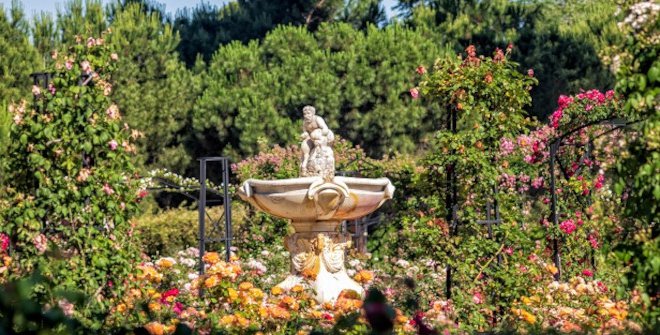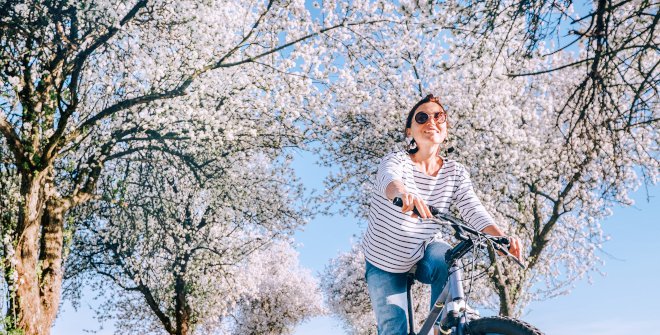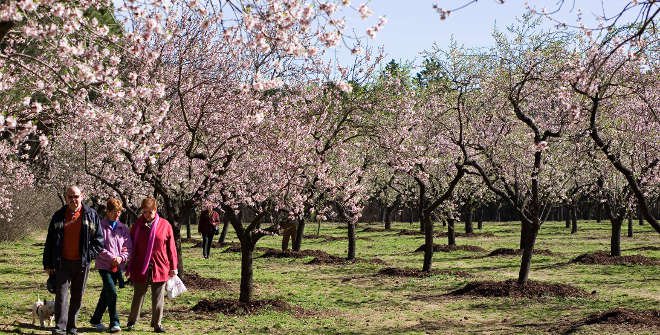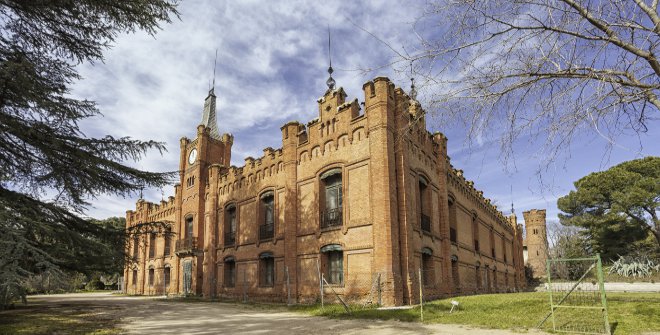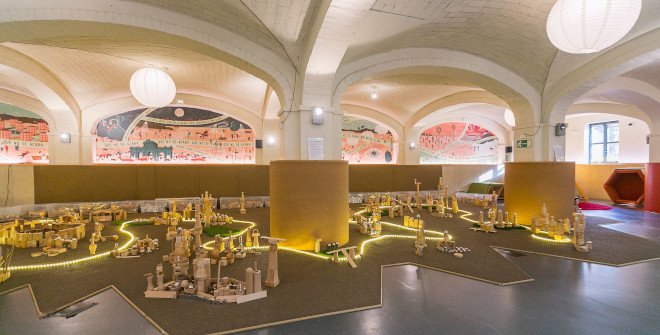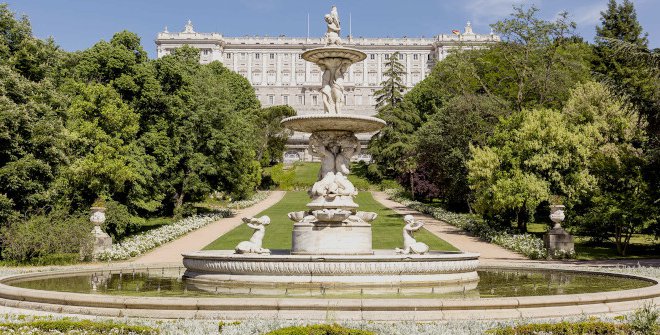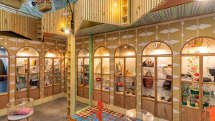Madrid’s former country estates
When King Philip II chose Madrid as the seat of his court in the 16th century, many members of the aristocracy and nobility moved to the capital and had agricultural estates built on the outskirts of the city. Over time, these became country homes for their leisure retreats. Today, some of them have been repurposed as parks, where history and nature come together.
Published in esMADRIDmagazine February 2025
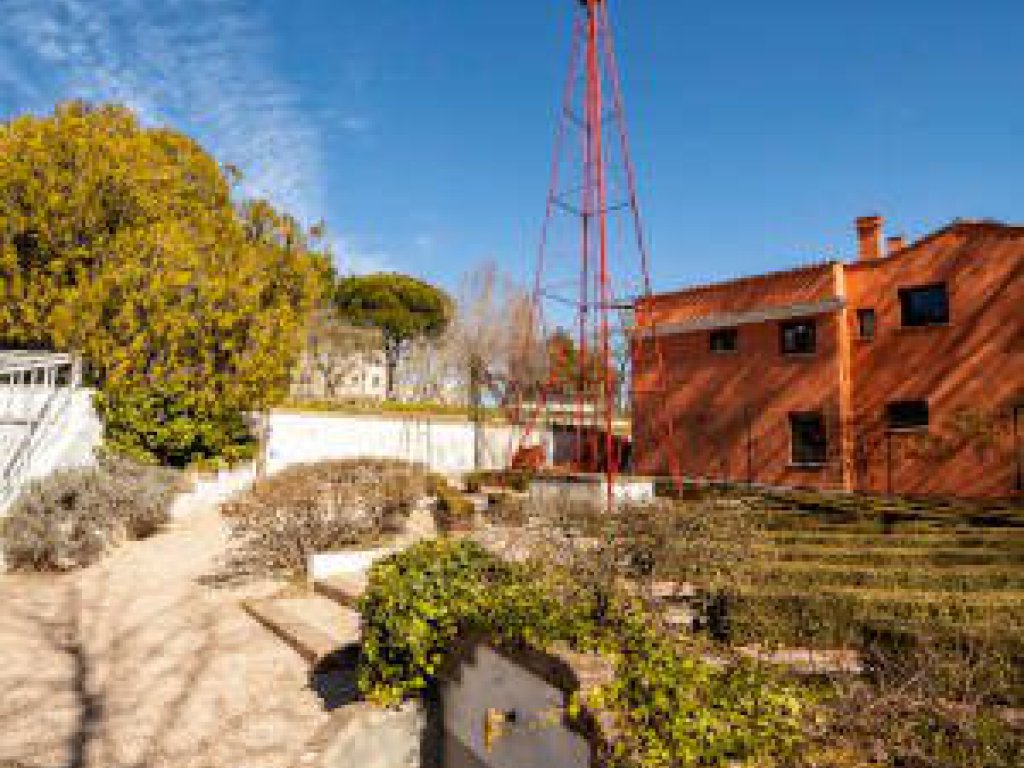
Pausing to enjoy the moment is also the best possible excuse to discover Quinta de los Molinos, one of those secret places that’s tucked away from the crowds. These days, it’s just a stone’s throw away from the city centre, next to Suanzes metro station, but the area used to be on the outskirts of the city, where a lot of noble families had their summer homes. In the early 20th century, the Count of Torre Arias donated some land to the architect César Cort, who purchased some more adjacent land to enlarge his property. He built several mansions there, one of which now houses Espacio Abierto Quinta de los Molinos, a cultural centre with a fixed programme for children and young people. It offers theatre, workshops, creative dance series and more. The space also features a café-garden where you can get a drink or a bite to eat. Everything is made by La Quinta Cocina, which provides culinary training for young people at risk of exclusion.
The park’s 25 hectares include large expanses of trees, where, in addition to the famous almond trees, you’ll find a large number of species including olive trees, cedars, plane trees and lilacs. There are all sorts of paths to explore, and it’s best to wander them aimlessly so you can stumble, here and there, upon ponds, fountains, wells and even a grass tennis court with some small stands around it. It’s a real shame that these days playing on it is strictly forbidden. If you do want to play at something, though, why not try to find the two windmills (“molinos”) the park is named after? They were brought over from the USA around 1920 to extract water for irrigation.
Among holm oaks and waterfalls
Quinta de los Molinos is just one of the country estates that were acquired by noble families on the outskirts of Madrid after Philip II chose the city as the seat of his court. They were used for leisure purposes, but they also served as livestock farms. Nearly all of them reached the height of their splendour in the 19th century. Many, like Quinta del Sordo in Carabanchel Bajo, where Francisco de Goya lived, no longer exist. But there are others we can still visit.
Some almond trees can also be found in Quinta de Torre Arias, which is also on Calle de Alcalá, practically right next to Quinta de los Molinos. It was the first country estate in Canillejas, originally built by the first Count of Villamor around 1580, although it was later renovated multiple times.
Its gardens hold as many as 51 different plant species, most notably a 300-year-old holm oak! You’ll also find lilacs, Judas trees with their heart-shaped leaves, photinias and more. Many Wednesdays and Sundays, guided tours are held by environmental educators. The best thing to do here, however, is to imagine what life was like in the old days in the park’s red palace, which is crowned by a clock tower. What a pity we can’t go inside! Among its extravagances there was even a Persian-style dressing room.
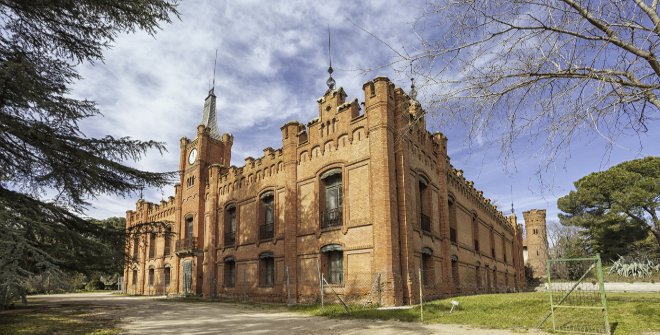
Located in the district of Salamanca, Quinta de la Fuente del Berro is a veritable oasis next to the M-30 motorway. It was one of the first country estates built in the eastern part of Madrid and its historical origins can be traced to the 17th century.
Privately owned by the royal family, in the 19th century it became a retreat for the bourgeoisie. Get this, in its heyday it even housed an amusement park! It was called Nuevos Campos Elíseos and it featured a merry-go-round and a roller coaster. Today, the park has a sloping terrain and water is the big attraction: ponds, artificial rivers, waterfalls and fountains are scattered throughout it.
The most notable features you’ll see while exploring include monuments to two poets, Bécquer and Pushkin, and a mansion. The park’s most famous inhabitants, however, are the peacocks that wander freely around it.
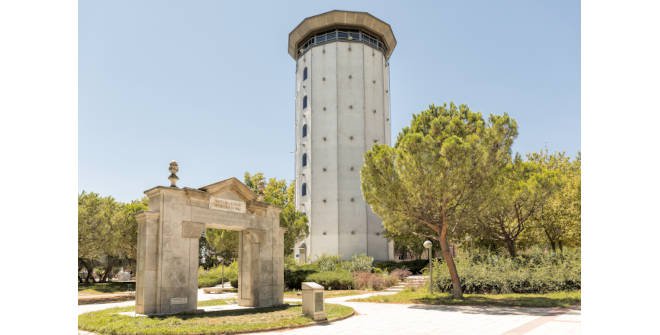
Reminders of the past
Casino de la Reina was a country manor with large gardens, now greatly reduced, which was gifted in 1817 by Madrid City Council to Queen Maria Isabel of Braganza, Ferdinand VII’s second wife. It occupied the perimeter which later came to delimit Glorieta de Embajadores, Portillo de Embajadores, Ronda de Toledo and Calle de la Ribera de Curtidores, in the heart of Madrid.
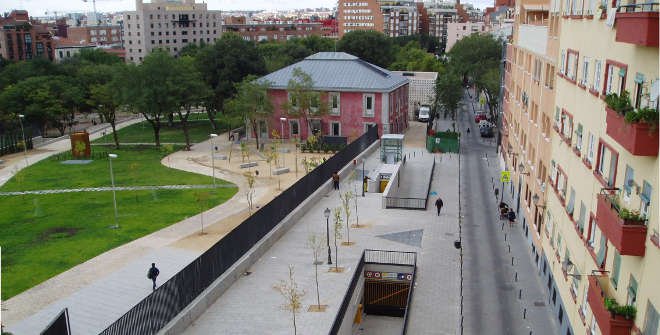
It’s home to a cultural centre which holds a range of activities, the so-called casita (little house), which offers children’s activities, and, in the way of natural heritage, over two hundred trees including Japanese pagoda trees, cherry plum trees, hackberries and paper mulberries. Long-gone are the days when the grounds had a mansion, a greenhouse, a large artificial river with a dock and two row boats, and an arbour at its highest point.
You’ll have to head to the district of Hortaleza if you want to find Huerta de la Salud, whose first owners were the Duke and Duchess of Frías. In the late 19th century, it was acquired by the lawyer Pedro Tovar. He transformed the site into an industrial agricultural complex whose only remnant is an enormous silo. The polygonal tower was, back in the day, part of a much-admired triad of landmarks, together with the granary and the dovecote which were both removed in the 1970s. The storks that nested atop all of them announced the arrival of spring to the area’s residents. Today, it holds a cultural centre.

A royal escape
Quinta de Vista Alegre, located in the district of Carabanchel, was built in 1802 but reached the height of its splendour in the mid-19th century, when it was the summer home of Maria Christina of the Two Sicilies, Ferdinand VII’s fourth wife. Later on, it belonged to the Marquis of Salamanca, who bought the property for 2.5 million reales—the currency of the time.
Its palace, which now houses the Regional Innovation and Training Centre, held a valuable art collection. Since 2021, its gardens have been open to the public. Designed by different architects and gardeners for various owners throughout several different periods, they’re an extraordinarily varied melange of shady, geometric, exotic, ornamental, rustic and fruit and vegetable gardens. The park also holds Plaza de las Estatuas, an artificial river and a parterre.

To discover the last of the historic country estates which have been preserved in Madrid, you’ll need to go to El Pardo, which is home to Quinta del Duque del Arco, built in 1717. The garden was designed by Claude Truchet, with French influences to suit the tastes of Philip V but also with Spanish and Italian characteristics. It has terraces, sculptures, a pond and some giant conifers which were planted later on and are very eye-catching, much like the palace which isn’t open to visitors. Just a glance is enough for us to realise that it greatly resembles La Zarzuela Palace.
